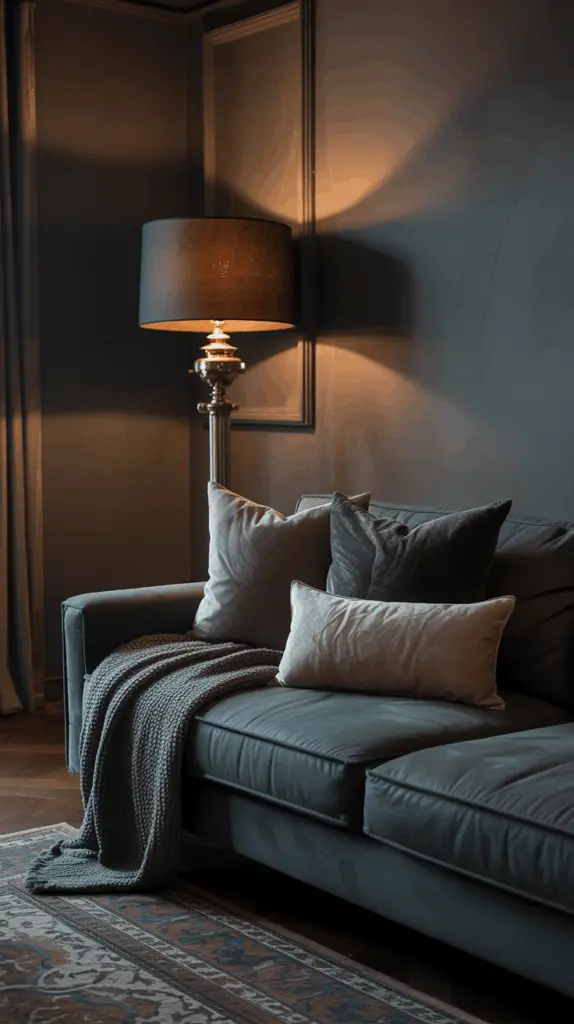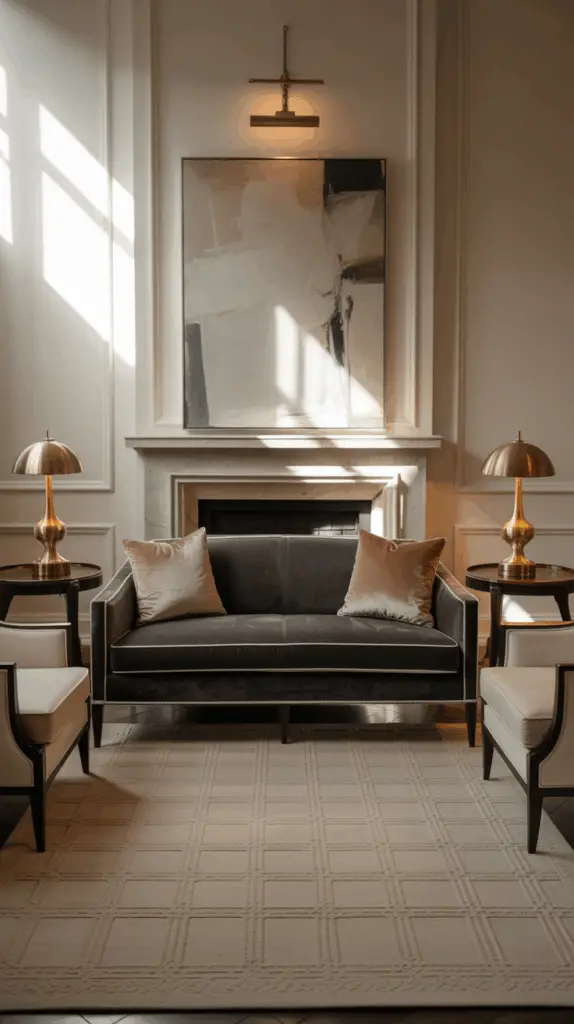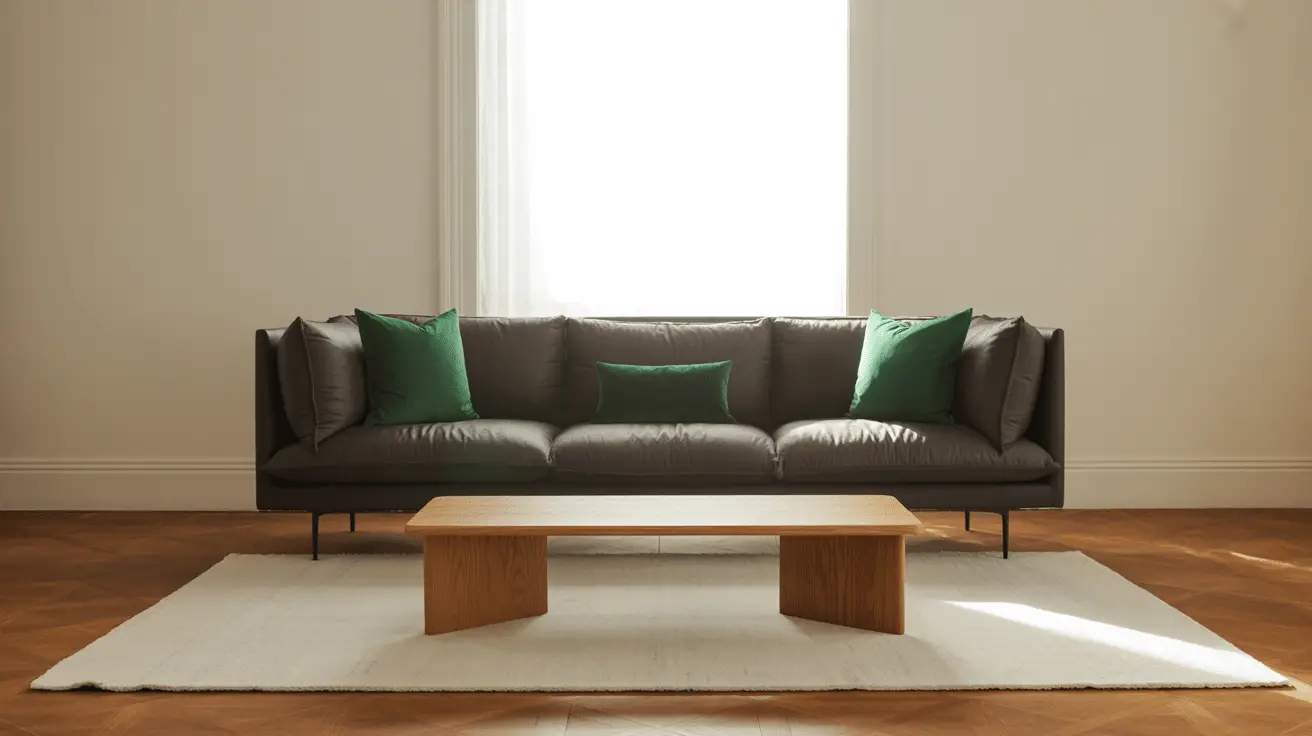Charcoal Couch Living Room Layouts That Add Sophistication and Style
Table of Contents
How a Charcoal Couch Can Define a Sophisticated Living Room
The color charcoal is often overlooked in favor of lighter, trendier hues—but in interior design, this rich shade of gray is a true power player. A charcoal couch instantly adds depth, drama, and elegance to any living room, acting as a neutral anchor that’s both modern and timeless. In fact, designers consistently turn to charcoal for its ability to ground a space while offering immense versatility in layout and style.
Whether you’re working with a compact apartment, an open-plan loft, or a traditional family room, a charcoal sofa can enhance the overall aesthetic with ease. According to a 2023 design trends report by Elle Decor, moody, grounding tones like charcoal are seeing a resurgence as homeowners gravitate toward comfort and visual sophistication in shared spaces.
In this guide, we’ll explore a range of charcoal couch living room layouts that go beyond basic arrangements. You’ll learn how to build symmetry, introduce contrast, incorporate color, and select complementary furniture that makes your charcoal sofa feel like a designer centerpiece. From minimalist modern to cozy eclectic, each idea is crafted to help you create a living room that’s both polished and personal.
Pairing Charcoal with a High-Contrast Color Scheme
One of the most effective ways to style a charcoal couch is by embracing contrast. A high-contrast color scheme not only makes the room pop but also enhances the rich tone of the charcoal without letting the space feel too dark or heavy.
Think bright white walls, crisp ivory rugs, or light oak wood tones to reflect natural light and balance the visual weight of a charcoal sofa. Accent colors like mustard, emerald green, or terracotta add warmth and personality, creating a curated yet livable feel.
To prevent the room from feeling too stark, introduce texture through throws, woven baskets, or velvet pillows. High-contrast layouts benefit from clean lines and balanced spacing, so keep side tables and accessories minimal and intentional.
High-Contrast Styling Guide
| Element | Suggested Material/Color | Purpose |
| Walls | Soft white or warm ivory | Brightens the room and creates contrast |
| Rug | Light gray or cream flatweave | Grounds furniture while lifting the space |
| Accents | Brass, mustard, or deep green | Adds warmth and visual interest |
| Wood Finishes | Light oak or bleached pine | Softens the charcoal and adds balance |
Creating a Moody Monochromatic Lounge
If contrast isn’t your style, lean into the depth of charcoal by creating a moody monochromatic space. Done right, this layout is luxurious, serene, and effortlessly chic.
Start with tonal variations of gray—smoky walls, pewter curtains, slate accessories—that wrap the room in visual harmony. Instead of feeling flat, a monochrome design thrives on layered materials and subtle shifts in shade. Use different finishes like matte, satin, and glossy to bring dimension to the palette.
A plush rug in a medium gray or deep taupe works well underfoot, while dark metal accents—like blackened steel or brushed nickel—add polish. For warmth, incorporate soft lighting with amber bulbs, candles, or wall sconces to keep the atmosphere cozy.
Monochromatic Layering Chart
| Gray Tone Level | Material or Item | Suggested Use |
| Charcoal (dark base) | Sofa | Anchor piece for the layout |
| Slate (mid-tone) | Rug, drapes | Adds texture and softness |
| Light Gray (highlight) | Cushions, ceramics | Breaks up visual weight |
| Blackened Metal | Lamp bases, frames | Offers sleek, structural detail |

Symmetry and Structure in a Classic Living Room Layout
Symmetry is a classic design tool that instantly elevates any space, and it works beautifully with a charcoal couch as the visual anchor. In this layout, your sofa becomes the centerline, and the rest of the room is arranged to mirror around it.
Place matching armchairs opposite or adjacent to the couch, ideally in a lighter neutral like beige or camel to soften the overall look. Flank the sofa with twin side tables and identical lamps for balance. This approach works especially well in formal living rooms, but it’s adaptable to casual spaces too.
Add a fireplace or artwork as a secondary focal point to draw the eye across the room. The key is to ensure that each side of the layout feels equally weighted in scale and style, even if not perfectly identical.
Classic Symmetrical Layout Formula
| Component | Placement Rule | Design Purpose |
| Sofa | Centered along main wall | Defines visual balance and flow |
| Chairs | Flanking or opposite the sofa | Offers comfort and face-to-face seating |
| Lamps or Sconces | On each side of the couch | Anchors the space with rhythm |
| Artwork or Mirror | Above sofa or fireplace | Enhances symmetry and adds elegance |

Open Concept Layouts with Zoning and Flow
In an open floor plan, a charcoal couch can help define zones without building walls. Whether your space connects to a kitchen, dining area, or entryway, using layout and placement thoughtfully will ensure your living room feels cohesive and intentional.
Position your charcoal sofa to back up to the dining space or kitchen, visually dividing the living area. Add a console table behind the couch to create a subtle separation and a place for lighting or décor.
Use area rugs to differentiate spaces—a patterned rug under the sofa and a separate rug in the dining zone creates distinction. Floating the sofa (instead of pushing it against a wall) can also open up flow and help balance the room.
Neutral tones, glass or open furniture, and consistent color repetition across zones will help tie everything together without crowding the space.
Open Concept Zoning Strategy
| Zone Element | Design Tip | Purpose |
| Sofa Placement | Float to create a soft divider | Defines seating area |
| Console Table | Add behind sofa for style and function | Provides surface space and visual break |
| Rugs | Use contrasting yet complementary designs | Visually marks each area |
| Color Consistency | Repeat charcoal + 2 other accent tones | Maintains flow throughout the space |
Layering Textures and Materials Around a Charcoal Couch
A charcoal couch has natural sophistication, but layering in tactile elements is what gives the living room a designer finish. It’s all about balance: pairing the richness of charcoal with softer, warmer materials brings visual depth and physical comfort.
Start with a base rug—choose wool, jute, or a patterned flatweave. Mix in tactile throw pillows in velvet, linen, or boucle in muted hues like sage, blush, or amber. A chunky knit or faux fur throw draped casually adds comfort and contrast.
For tables and storage, go for mixed materials: a wood coffee table with black iron legs, marble trays on side tables, or woven baskets for storage. Finish with ceramic or stone accents and a few leafy greens to add life.
Material Layering Toolkit
| Material Type | Suggested Item | Textural Impact |
| Natural Fiber | Jute rug, woven baskets | Adds warmth and organic contrast |
| Soft Fabric | Linen or velvet pillows | Softens the boldness of charcoal |
| Metal | Black iron or brass table legs | Provides structure and modern edge |
| Stone/Ceramic | Planters, vases, candle holders | Earthy and grounding |
Conclusion: Timeless Layouts for a Charcoal Couch-Centered Living Room
A charcoal couch is more than just a practical seating choice—it’s a bold foundation for a refined, elevated living space. Whether you opt for high contrast or a deep monochromatic palette, a symmetrical arrangement or an open concept zone, the charcoal sofa brings a sense of grounding elegance to any room.
By paying attention to balance, flow, color, and material layering, you can create a living room that feels tailored yet inviting, stylish yet comfortable. These layouts aren’t just about looks—they support the way you live, gather, and relax. With thoughtful design, your charcoal couch becomes the anchor to a space that feels cohesive, sophisticated, and entirely your own.

